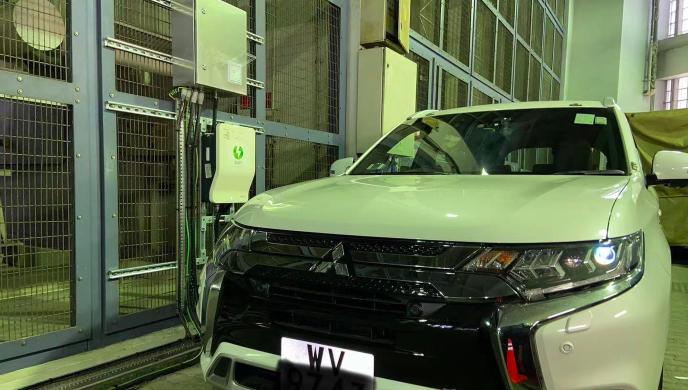
The government has recently revealed its plans to further boost the Electric Vehicle (EV) ecosystem by installing a total of 60,000 charging points by 2030 across Singapore.
However, a few key questions still remain: Is the republic’s existing infrastructure adequate enough to support the government grant plans? Who will provide the additional power capacity required for the uninterrupted running of the charging points?
We posed this question to Geoffrey Chan, Principle Advisor at Delight Innovative Technologies, a company that is developing a ‘power system neutral EV charging (PSN-EVC), which he claims to have successfully implemented in his home city, Hong Kong.
In this interview, he discusses PSN-EVC in detail:
What are the major flaws of existing EV charging points in Singapore or elsewhere?
Existing EV charging stations have several drawbacks. Firstly, these chargers require additional power capacity. What it means is that utility companies need to increase the power capacity to the locations and premises, where the charging points are installed, to upgrade the switchboard.
Also Read: ‘Singapore isn’t ready for mass adoption of EVs yet; hybrid may be better for the present’
In most cases, EV chargers come with 100 per cent power allocation to allow them to deliver to its full capacity. However, in practice, this results in great waste in the utilisation of this added capacity. Based on some reports, the utilisation is below five percent on average and 10 per cent at best.
Hence, it is a lose-lose situation — while it ends up in a loss for the utility company by wasted investment in added capacity, the user will also incur loss as he/she will have to shoulder the cost to utility.
True, governments around the world have put in extra subsidy and efforts to build the EV charging capacity. For instance, the Hong Kong government pumped US$25 million into EV charging at home subsidy in 2020. Singapore has also initiated a nation-wide EV charging infrastructure tender in 2021 to provide around four EV charge points per carpark. However, all these are dependent on the existing network capacity.
Secondly, purpose-built charging stations or street charging points are installed to provide paid/free charging to EV owners. They need to book a time-slot and drive to the nearest station to get charged, where fast or super-fast chargers are installed to quickly charge the vehicle within an hour.
But there is a problem: fast charging shortens the battery life by about 10 per cent. However, this concern is disregarded at present as there is no alternative solution existing in the market.
Home and workplaces are the best locations to set up charging points. It is the most user-and environmentally-friendly option. However, the issue is that it will overload the existing power system, as EV charging could be occurring at a time when other electronic appliances are running.
But who can get the limited spare capacity at each location/district initially? Surely, carpark managements may be reluctant to install any charging points and utility companies are unwilling to approve the request to increase the capacity.
All these pose challenges for the governments and private sector.
How can these challenges be tackled? You claim to have developed an alternative solution, called PSN-EVC? How does it help?
PSN-EVC stands for ‘power system-neutral EV charging’, which uses our proprietary NALA system. It is a revolutionary concept based on the principle that EV charging should not require upgrade of an existing power system. This concept has been implemented successfully and put into service in Hong Kong.
The PSN-EVC uses the ‘shadow charging’ method — meaning the difference of annual maximum building load minus the actual load will be used to charge EV. The net result is that the annual maximum building load will not increase due to EV charging.
It has been proven that ‘shadow capacity’ is sufficient to replenish EVs parked in a workplace or at home.

Geoffrey Chan, Principle Advisor at Delight Innovative Technologies
I can explain the working model through an example.
Let’s assume, there are 12 parking spaces in a domestic building, and each space is provided with a PSN-EVC charger. Let’s say the annual maximum load of the building is 600A and the peak consumption occurs at around 10 pm.
Now, when the building is drawing 600A, all EVs that are plugged to the chargers will be put to a standby mode as no shadow power is available. When the building load drops, for instance to 400A, at 1 am, the shadow power available is 200A.
PSN-EVC will then allocate 16A each to the 12 EVs to replenish the battery. Even if every EV is charged, the total power consumption would always be less than 600A.
Now, if some of the parking spaces are empty, or a plugged-in EV is fully charged, the unused part of the shadow capacity will be distributed orderly to other EVs to charge them up faster. In the morning, most of the EV should be fully charged.
When an EV is driven to the workplace or a supermarket carpark, PSN-EVC there will recharge the EV based on the shadow power available at that premises for the period the vehicle is parked there.
How can PSN-EVC bridge the gaps in and address the issues faced by existing charging stations?
Existing charging stations are an interim but a costly and wasteful solution. Here, the driver needs to move the vehicle to a station and remove it immediately after the charging is done.
Due to this, the station must increase capacity to run the station, but it takes time and money.
Also Read: Goldbell acquires BlueSG, to invest US$52.3M in the e-car sharing firm over the next 5 years
PSN-EVC is the solution for the quick installation of EV charger (in office parking and home parking) with a minimum cost. When more chargers are installed with chargers adopting PSN-EVC, shadow charging will be available everywhere and there is no need to find charging point anymore.
The key benefits of PSN-EVC are: 1) no waiting time before commencing installation, 2) optimal usage for the utility (optimising the utility usage and reducing cost for everybody), and 3) peaceful co-ordination between normal electricity use and charging can be harmonised.
Under present power grid rules (without PSN-EVC), the requirement to increase the grid source (generators, cable and transformers) are huge and are not readily achievable.
When more parking spaces are installed with PSN-EVC, it can be more tolerant to non-EV parked at a EV charge point. The effort to allocate the usage of EV charging points can be eliminated. This way, every vehicle user, EV or non-EV, will be happy.
The lack of charger is hindered by the simple-minded policy to provide for additional power. PSN-EVC can help overcome that hurdle.
Government policy to stop selling ICE can be immediately achievable if EV itself is economic enough. Both Hong Kong and Singapore are ideal places for 100 per cent EV conversion as the vehicle mileage is lower. Both cities have sufficient capable power system engineers to apply and master PSN-EVC.
—
Image Credit: PSN-EVC
The post Is ‘shadow charging’ the answer to the many challenges faced by existing EV charging stations? appeared first on e27.

